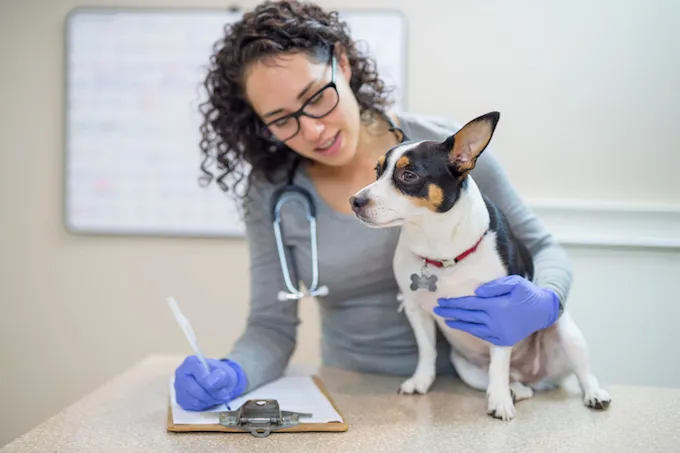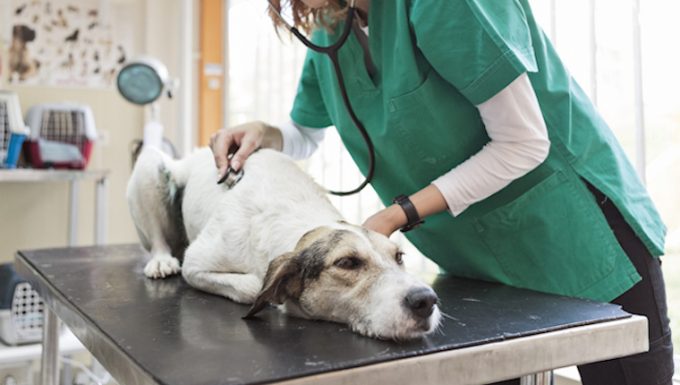Struvite urolithiasis in dogs is a condition that involves a specific type of kidney stones. The stones are made up of ammonium, magnesium, and phosphate.
Usually, female dogs suffer from the condition more than male dogs. Additionally, dogs aged around six or seven years of age seem most likely to develop the condition.
Technically, the condition is also known as struvite bladder stones.
You can read more about general kidney stones in dogs here.
If you see the signs of the condition in your dog, then get to a veterinarian for a proper diagnosis and treatment.
Here’s what you should know about the symptoms, causes, and treatments for the condition.
Symptoms of Struvite Urolithiasis in Dogs
The condition produces a range of symptoms. The symptoms usually affect a dog’s pee. For instance, some of the most common symptoms include:
- Peeing more than normal
- Straining to pee
- Cloudy pee
- Drinking more water than normal
- Peeing in inappropriate places
- Pee with blood in it
Causes of Struvite Urolithiasis in Dogs

The cause of the condition can be a number of things. For example, some of the most common causes include:
- Steroids
- Urinary tract infections
- Diet
- Alkaline pee
Additionally, the following breeds are most predisposed to the condition:
- Miniature Poodle
- Lhasa Apso
- Shih Tzu
- Miniature Schnauzer
- Cocker Spaniel
- Bichon Frise
Generally, female dogs also seem to suffer from the condition more than male dogs.
Treatments for Struvite Urolithiasis in Dogs
Firstly, your vet will ask about your dog’s symptoms. This will include any problems peeing.
Secondly, your vet will ask about your dog’s full medical history. This will include any breed-specific problems.
Thirdly, ultrasounds and X-rays will be used to identify the stones.
Generally, treatment involves diet changes and antibiotics. For example, eliminating problematic foods (including magnesium and certain proteins) can help. Your vet will formulate a safe diet plan for your dog.
Additionally, antibiotics will treat any infection. As always, if your vet prescribes your dog any medicine, make sure to stick to the correct dose and frequency instructions. Also, complete the full course of medicine.
Have you ever cared for a dog who suffered from this condition? How did your vet help your dog recover? Let us know in the comments section below.









